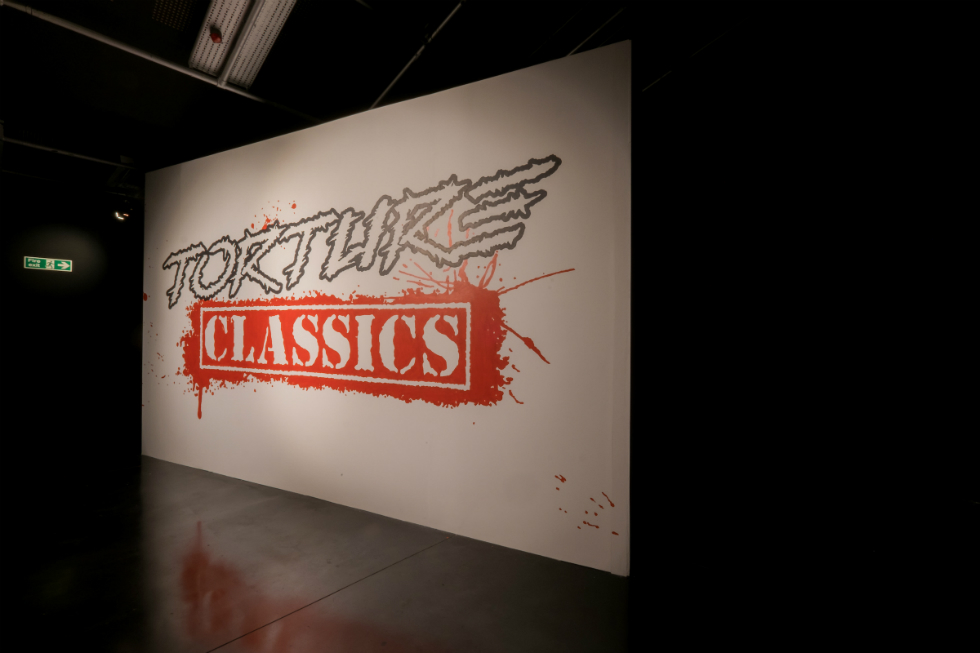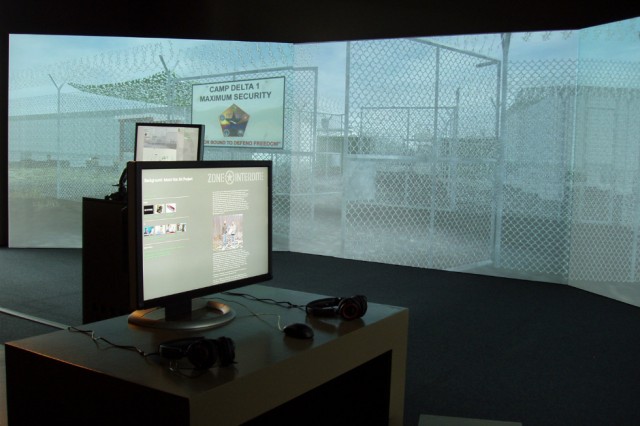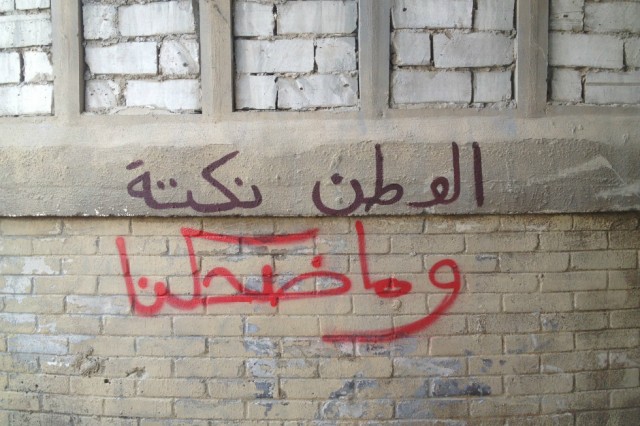“Look and think twice”: How Much Of This Is Fiction. – Reviewed

Britney’s Baby One More Time will never sound the same again… Maja Lorkowska finds artists analysing torture, subliminal messaging and imprisonment for FACT’s current exhibition…
While I’m usually apprehensive about using the phrase “post-anything”, FACT’s current exhibition How much of this is fiction. really does home-in on the all-pervasive doubt surrounding our absorption of new, and post-truth, information. It comes post-Brexit referendum and post-Trump election, without ever addressing either of these events directly. While they may be alluded to in the mind of the viewer, the show focuses on exposing the techniques used within popular media to manoeuvre the audience’s thoughts onto a certain path. The artworks pose as dystopian alternatives to actual events, and we get the fun job of applying them to our own experiences of truth.
FACT’s Gallery One is a temporary home to the Guantanamo Bay Museum of Art and History (2012 – ongoing), branded with bright orange letters and accompanying leaflet, mirroring the inmates’ infamous uniforms. The imaginary collection of conceptual exhibits, apparently housed on the site of the closed prison, is the idea of artist Ian Alan Paul. Its inspiration – Guantanamo Bay Detention Centre – holds a peculiar place in the public consciousness. It is a place associated with torture, and despite the constant stream of accounts (and legal cases) of inhumane treatment, it is still shrouded in secrecy. There’s a morbid sense of curiosity about closed-door facilities, responsible for the continuous stream of prison-themed TV shows. You’re likely to see this exhibition out of sheer curiosity.
The collection itself is charged with themes of misinformation and its risks, the struggles and hierarchies of power and the limitations of freedom. Most interestingly, the Guantanamo Bay Museum of Art and History’s set-up does not try to hide its fictional nature; openly revealing that it is a figment of imagination aiming to bring the conversation about Guantanamo to the surface.
Very dark, with screens acting as the main sources of light, the room’s ominous atmosphere emphasises the detention facility theme. However, it isn’t sensory deprivation that we are made to experience.

The brightest piece Zone*Interdite (2006, pictured, above) by Wachter & Jud comprises of three screens and a joystick – invitingly abandoned videogame-esque immersion on a quiet afternoon. The simulation will take you around one of the 3D zones within the Guantanamo Bay Detention Centre in glorious game form. Far from gruesome – the site shows only the bare bones of the area – all of the information needed to create this is publicly available, posing the question: What else could we find?
There is a humorous streak running through How much of this is fiction.; humour being an effective device in political art and in protest. For example, Homeland Is Not A Series (2015, pictured, below) by The Arabian Street Artists; a satirical name taken on by Heba Y. Amin, Caram Kapp and Don Karl, who were commissioned to spraypaint graffiti on the Channel 4 TV series sets, who wanted realistic street tags. Their resulting mocking phrases in Arabic critiquing the Western treatment of its themes – including “Homeland is racist” – weren’t noticed until the show first aired, causing waves of controversy. The artists manage to subvert the status of the show from fiction to genuine and localised social commentary. It is the perfect analogue hack; initially available only to a few, and eventually reaching a larger audience than the show itself.
Heading upstairs, Gallery Two is divided into two parts: Newsroom, which addresses the concerns of the post-truth era more directly, and more of the Guantanamo Bay Museum of Art and History, where we encounter UBERMORGEN’s Torture Classics (2010, pictured, top). A bloody hand-painted mural on the wall with the memorable title identifies this tiny space; in it, a satirical video, listing all the wonders of a torture playlist. The ‘00s Britney Spears hit Baby One More Time is a pleasant reminder of my questionable teenage taste, but as the sounds switch to Nine Inch Nails, the space instantly feels more oppressive; I suddenly remember that I am watching satirised barbarity alone in a dark room. Yes, songs like this really are believed to be a tool for torturing detainees.
Artworks of this emotional calibre work on multiple levels. We might initially react with a little nervous giggle, yet this stems from the natural disbelief that such acts could ever be carried out. In the case of Torture Classics, the familiarity of the tool (music) makes it impossible to comprehend.

Despite interesting insights, the Newsroom section is not nearly as engaging as the floor below. Too much video, no matter how powerful, ironically does not work well with our modern attention spans, simply making them less user-friendly.
Perhaps this is also because the room is overshadowed by exhibits in the foyer, namely a new temporary room. !Mediengruppe Bitnik’s Delivery for Mr Assange (2013) is a three-part installation resulting from what can be called a collaboration between the artists and activist/Wikileaks founder Julian Assange. The installation is a photograph, a book of text and a full-sized room: a recreation of the Ecuadorian Embassy office that Assange has been confined in since 2012. The room is designed from memory following several visits. It is astonishing in its detail; from the titles on book spines, to a glass of whiskey on the table. Being inside feels like experiencing the impossible; a better version of a VR headset.
What remains is doubt. We begin to distrust the artists’ intentions and the validity of their allegations. If we can be fooled once by the mass media, why can’t artists use our gullibility against us too? This appears to be the overall intention of the show: to make us look and think twice.
What makes How much of this is fiction. so appealing is that despite dealing with gravely serious subject matter, where the fight for authenticity is at stake, it never takes itself too seriously. Instead of pointing fingers, the works seem to nudge at us and playfully warn about the age of digitally distributed misinformation.
I cannot help but wish that the artworks tried a little harder to trick the viewers, and there was less transparency about the show’s creation. Wouldn’t it be great if we all went around telling our friends about the Guantanamo Bay Museum of Art and History? Would fiction become fact? Or perhaps we would miss the point? One thing’s for sure, Britney’s Baby One More Time will never sound the same again.
Maja Lorkowska
See How much of this is fiction. at FACT Liverpool, until 21 May 2017 — FREE
Images from top: UBERMORGEN, Torture Classics, 2010. Wachter & Jud Zone-Interdite (2000-ongoing). Arabian Street Artists, Homeland Is Not A Series (2015). All artworks are at FACT for How much of this is fiction, 2017. Courtesy the artists and FACT





